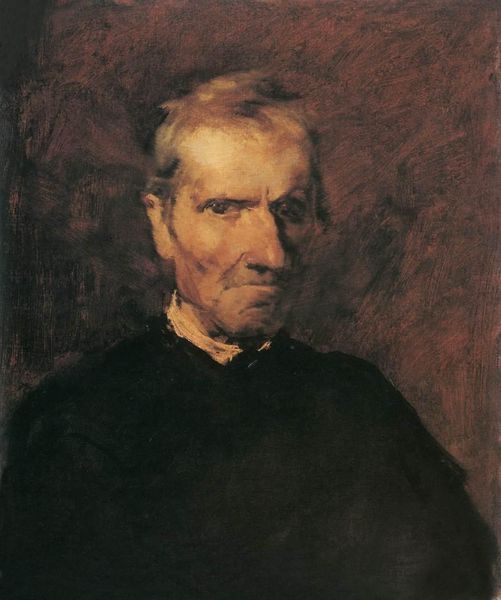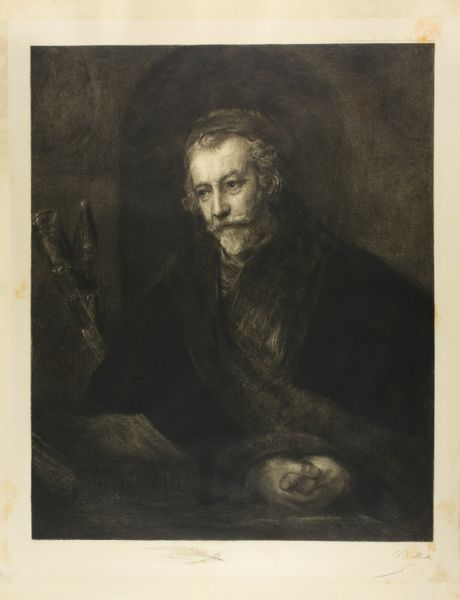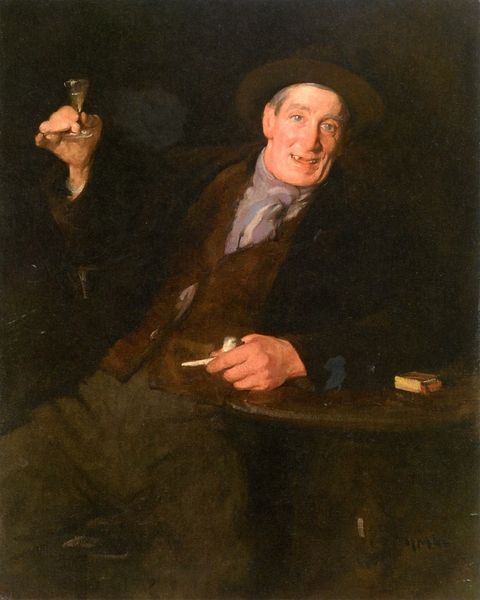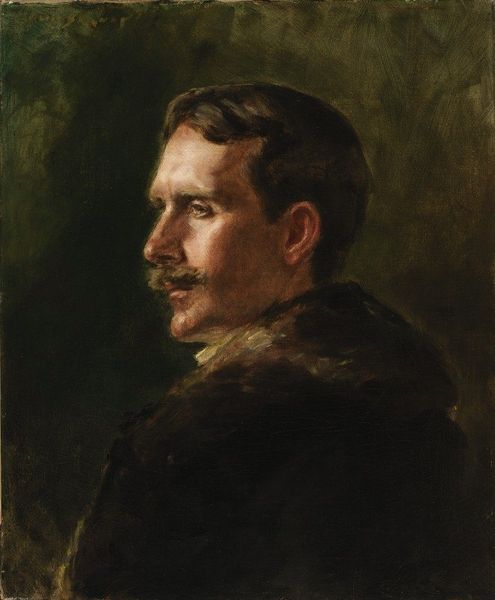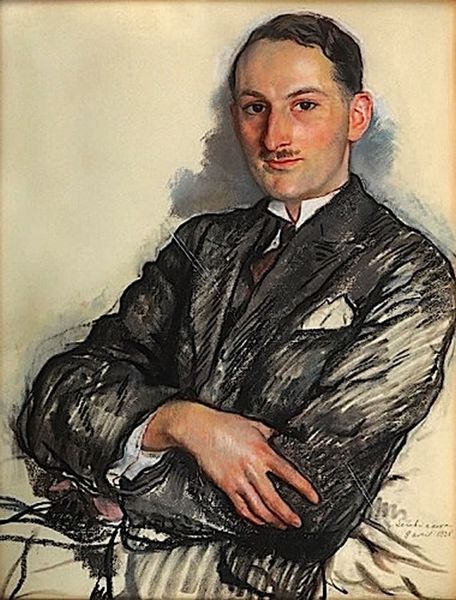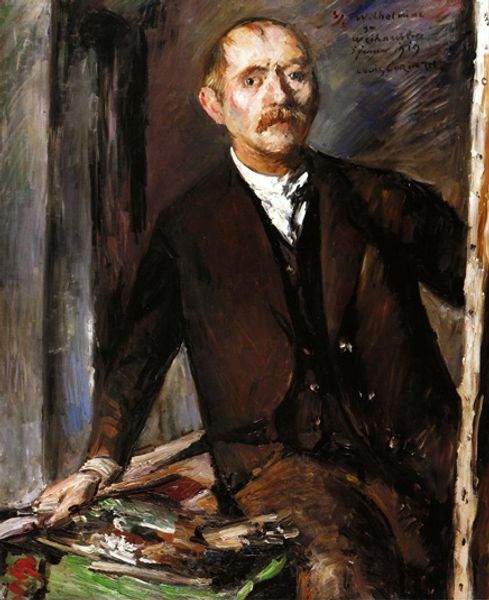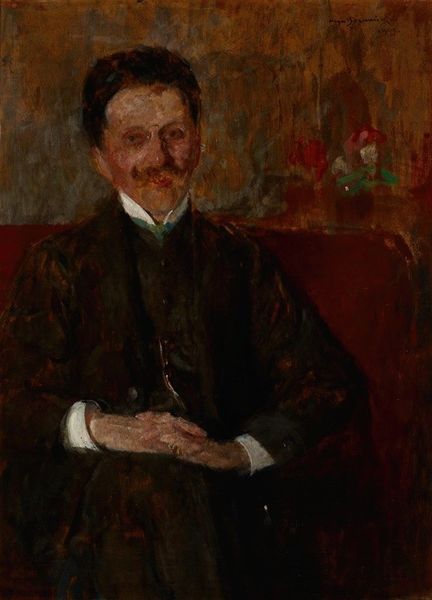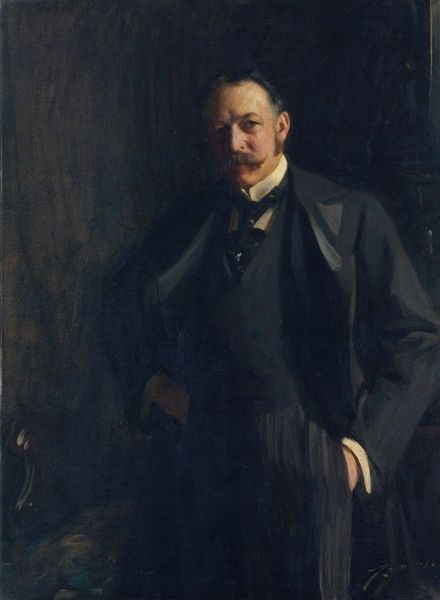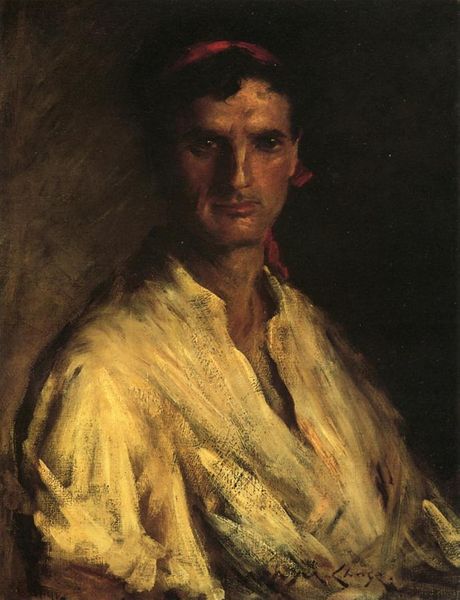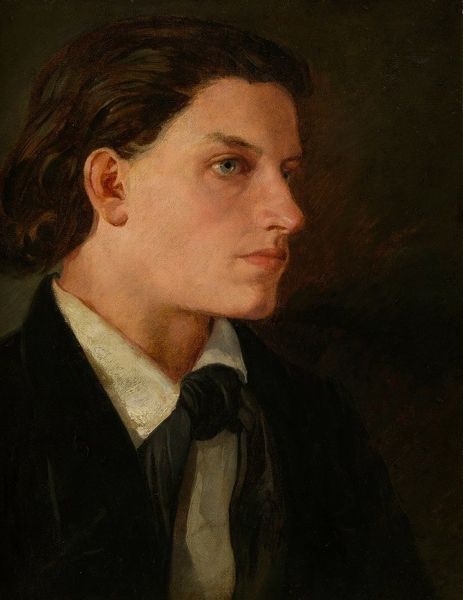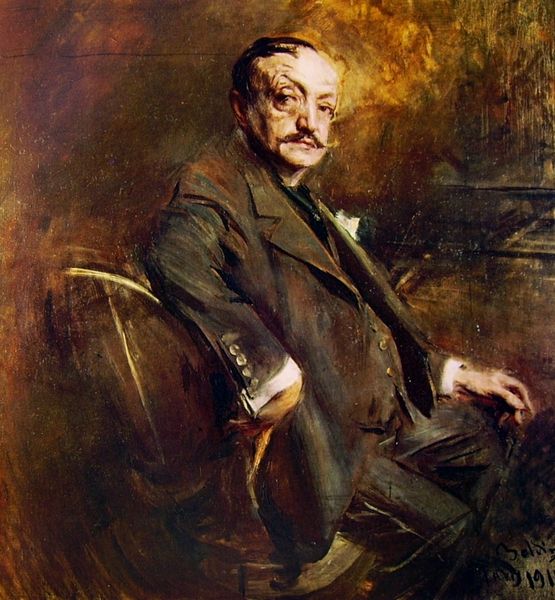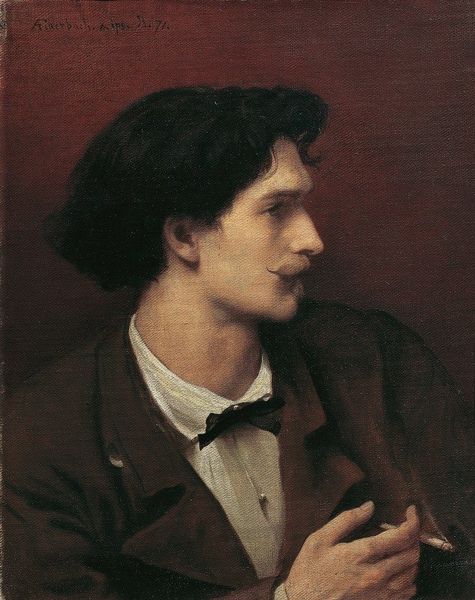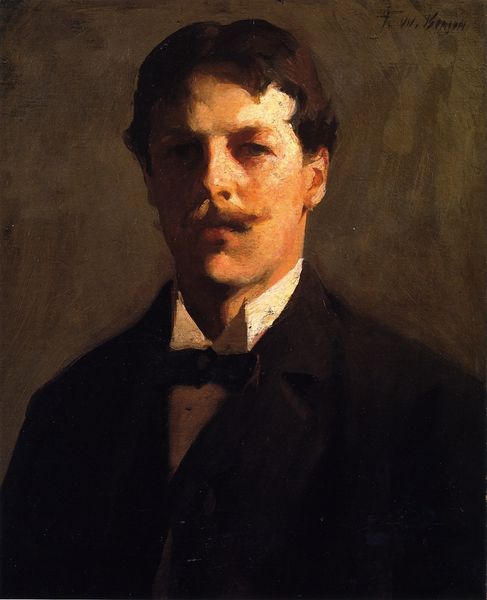
oil-paint
#
portrait
#
portrait
#
oil-paint
#
academic-art
#
modernism
#
realism
Copyright: Public domain
Editor: So here we have Thomas Eakins’ “Portrait of James Wright,” from 1890, an oil painting in a private collection. He looks pensive, a little melancholy even. What do you see in this portrait? Curator: Eakins was an interesting figure because he was committed to realism. How can we understand the implications of representing the sitters without idealization? This man, James Wright, seems comfortable in his own skin, even with imperfections that the artist hasn’t shied away from portraying. What does this imply in contrast with more traditional heroic portraiture, often reserved for elite social classes? Editor: It does feel…more human. Almost ordinary. Curator: Exactly. By representing the sitter as a "common" person, the artist challenges notions of identity and worth defined by conventional means, such as societal position, profession, or money. Eakins seems to suggest that dignity and character reside beyond mere status or outward appearance. Does this approach strike you as a form of social commentary? Editor: I can see that, especially with the context of its time. How do you think gender roles played a part? Curator: That's insightful! Men, especially during this era, were held to particular ideals of masculinity. How might this representation contest those expectations? The subject’s posture is more relaxed, and his attire, though formal, is subdued. Editor: He's not posed in a heroic way at all. Curator: Exactly. I find myself considering the ways artists can offer alternative perspectives on traditional roles, highlighting a broader spectrum of humanity that counters prevailing norms. The subtle defiance of Wright, the man himself, merges with Eakins' dedication to depicting him in a plain fashion to resist social conventions of their day. What a statement! Editor: I never considered how a portrait could be a statement. Thanks for shedding some light on how art intersects with society and identity.
Comments
No comments
Be the first to comment and join the conversation on the ultimate creative platform.
